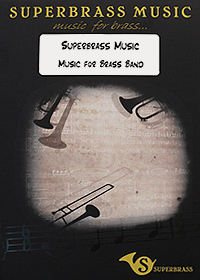Bones Apart
19-Oct-2005Regent Hall, London,
Friday 14th October
Following on from the students who make up the Royal Academy of Music Trombone Choir the platform looked quite empty with just the four music stands as the all-female quartet Bones Apart took the stage.
The group consists of Carol Jarvis, Becky Smith, Rebecca Harper, with relative newcomer Lorna McDonald on bass trombone. There's nothing like jumping in at the deep end and they did just that with their first contribution, an arrangement of Bach's "Toccata & Fugue in D minor" (now thought to be based on a piece not by Bach, originally intended for the violin!). Bach was an inveterate arranger and re-arranger, and one suspects he would have approved of the craftsman's efforts in producing this version - he would definitely have marvelled at the technique and musicality shown in the playing.
The movement between the parts was seamless, with chords building up from the bass, and the occasional lip trill for good measure. The fugue itself started very quietly, with each line deftly articulated, and answering phrases dove-tailing in with each other - it made one quite breathless just listening to them.
Following the introductions, given informally by each player in turn throughout the programme, they turned to one of the relatively few pieces writen for the trombone in the classical period. Beethoven's "Three Equali" were performed at his funeral, as befits the role of the trombone on solemn and stately occasions. With alto trombone on the top part, the parts were evenly balanced, with a marked uniformity of approach to attack and dynamics.
Staying with original works, they next presented the "First Trombone Quartet" by Apon, a harpist whose husband plays in the trombone section of the Rotterdam Philharmonic Orchestra, for whose trombone section the piece was written. "Part One" opened with the melody in the 3rd part, set against a flowing accompaniment with the two top trombones muted. It was a poignant melody, with more than a hint of nostalgia. In "Part Two", shot notes from each player in turn built up an intricate pattern across the group, calling for very precise note placement, before moving into a jazz-tinged theme in triple time. The day before the Regent hall concert, they had performed the work in an underground mine in Germany, described in a humourous manner in the introduction.
"Connopy" by Rik DeJonge, proved to be rather jolly, with some fast semiquavers articulated very smoothly, and a jazzy feel, particularly in the fugato section. The slower central passage showed the influence of film music, and also recalled the brass music of Alec Wilder (such as the "Effie Suite") with bright, open chordings.
Chernetsky is widely regarded as Russia's equivalent of John Philip Sousa, having written numerous marches for the various branches of the Soviet forces. His "Tank Corps March" was introduced by Lorna, who also took the opportunity to try out the few Rusian phrases she had learnt, and which were not wholly relevant! It was a lively composition, with the melody switching between the parts and the bass trombone constantly on the move keeping the momentum going.
For the final item and of the first half of their recital, they moved ino the sphere of music theatre with music from Gounod's opera "Faust". Having outlined the story, involving Faust selling his soul to the devil, they each took on a part in the drama - Faust, the Devil, the girl and her brother, with appropriate wigs or hats. The music selected was largely from the ballet that Parisian audiences demanded of their opera composers, and included ample opportunity for choreography a la Canadian brass, bobbing up and down, parading around and the like, but all without disrupting the musical flow, which continued unabated.
After the interval, where there was an opportunity to mix with the players, they returned to the stage having changed from black trousers into white, and opened with the "Overture to The Magic Flute" (Mozart arr Hammond). With an alto once more on the top part, they made light of the semiquavers and gave a very crisp rendition, with secure pitching, particularly the top Cs on the alto trombone.
The alto was to the fore once more in Anton Bruckner's "Locus Iste", which they often use as a demonstration of ensemble playing when conducting master classes, sometimes playing with their eyes shut to underline the need to listen to one another. It was a fine demonstration of mostly subdued and controlled playing, with a powerful climax all the more impressive because of the restraint in the opening section.
Handel's "The Harmonious Blacksmith" is a set of variations originally written for keyboard, with each one becoming progressively harder, faster and more intricate. It certainly offered the opportunity for each player to show their skill, with the third variation shared out neatly between 3rd and bass, and all four taking part of the triplet section.
Lorna McDonald, on bass trombone, was featured as soloist in Grieg's "Elegy, Opus 47 No 7". The melancholic nature of the music suited the darker sound of the bass trombone, and Lorna's playing was smooth and restrained, even when at the bottom of the register. This was followed in total contrast by "Another Openin' Another Show" (Porter arr Challis). With a fanfare at the start it was played with no copies, the group standing right across the front of the platform, complete with the judicious use of slide vibrato and unison glissandi.
"Latinole!" was a group of three Latin American numbers by Jobim: "Wave", "Girl from Ipanema" and "No more Blues". With a narrower bore trombone taking the top line, the Latin rhythms were captured from the start, even thought there was no rhythm section to help them out. Solos flowed smoothly, as if improvised, and the last number again featured a very busy bass trombone part.
Due to shortage of time, they had to cut out one of the three numbers listed under the heading "Frankly my Dear". "My Funny Valentine" saw each player entering in turn, muted, over the bass trombone, and made the most of the poignant character of the song. With "New York, New York" it was hard to tell that there were only four parts on the go, with intricate harmonies and chordings, while the melody and bass parts kept going. There was a real big-band feel to the music, with the rhythmic impulse being maintained even through the rallentando into the last chorus and change of key.
As they stood at the front of the stage to receive their applause it seemed that there may be an encore, even if one of the group had to encourage the audience a little, and so they launched into a rip-roaring account of Smetana's "Dance of the Comedians", complete with flutter-tonguing adding to the excitement. With their relaxed, informal presentation, coupled with such first class playing and a well-balanced programme of original works and transcriptions, they would have won many new friends, including, no doubt, the numerous other trombone players present in the audience.
Peter Bale









